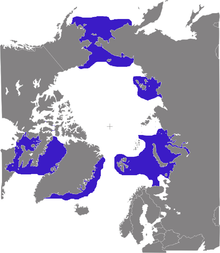A bacchanale is an orgiastic musical composition (Kennedy 2006), often depicting a drunken revel or bacchanal. Examples include the bacchanales in Camille Saint-Saëns's Samson and Delilah, the Venusberg scene in Richard Wagner's ...
A bacchanale is an orgiastic musical composition (Kennedy 2006), often depicting a drunken revel or bacchanal.
Examples include the bacchanales in Camille Saint-Saëns's Samson and Delilah,
| ギロー:バッカナル(サムソンとデリラ) | Bacchanale (Samson et Dalila) |
the Venusberg scene in Richard Wagner's Tannhäuser (Kennedy 2006), "Danse générale (Bacchanale)" from Maurice Ravel's "Daphnis et Chloé," and Tableau 4, the Bacchanale in Alexander Glazunov's The Seasons.[citation needed] John Cage wrote a Bacchanale in 1940, his first work for prepared piano (Pritchett and Kuhn 2001). The French composer Jacques Ibert was commissioned by the BBC for the tenth anniversary of the Third Programme in 1956 (Anon. 1956), for which he wrote a Bacchanale.[citation needed]
In 1939, Salvador Dalí designed the set and wrote the libretto for a ballet entitled Bacchanale, based on Wagner's Tannhäuser and the myth of Leda and the Swan (Terry 1976, 44).
walrus 海象,不知誰取的,愛斯基摩人稱奇為"海虎".....
Robert J. Flaherty: Nanook of the North (1922)
https://www.youtube.com/watch?v=7ystHx3eA28日本語:セイウチ (Odobenus rosmarus) は、哺乳綱食肉目セイウチ科セイウチ属に分類される鰭脚類。本種のみでセイウチ科セイウチ属を構成する。
The origin of the word walrus is thought by J.R.R. Tolkien[5] to derive from a Germanic language, and it has been attributed largely to either the Dutch language or Old Norse. Its first part is thought to derive from a word such as Dutch walvis "whale". Its second part has also been hypothesized to come from the Old Norse word for "horse".[6] For example, the Old Norse word hrossvalr means "horse-whale" and is thought to have been passed in an inverted form to both Dutch and the dialects of northern Germany as walros and Walross.[7] An alternative theory is that it comes from the Dutch words wal "shore" and reus "giant".[8] a b c d Francis H. Fay, Odobenus rosmarus," Mammalian Species, No. 238, American Society of Mammalogists, 1985, Pages 1-7.
The species name rosmarus is Scandinavian. The Norwegian manuscript Konungsskuggsja, thought to date from around AD 1240, refers to the walrus as "rosmhvalr" in Iceland and "rostungr" in Greenland (walruses were by now extinct in Iceland and Norway, while the word evolved on in Greenland). Several place names in Iceland, Greenland and Norway may originate from walrus sites: Hvalfjord, Hvallatrar and Hvalsnes to name some, all being typical walrus breeding grounds.
日本では伊豆・三津シーパラダイスで1977年(昭和52年)に、日本で初めてセイウチの飼育を開始したのをはじまりに、幾つかの施設で飼育され、また、1994年(平成6年)には、鴨川シーワールドがはじめて繁殖に成功している。
- 「アイ・アム・ザ・ウォルラス」 (I am the Walrus) は1967年に発表されたザ・ビートルズの楽曲である。ナンセンスな歌詞の中に登場するセイウチはルイス・キャロルの『鏡の国のアリス』に出てくる「セイウチと大工」という詩からの引用であるとされる。テレビ映画『マジカル・ミステリー・ツアー』には、ジョン・レノンがセイウチの扮装をしてこの歌を歌うシーンがあり、サウンドトラック盤『マジカル・ミステリー・ツアー』のレコードジャケットにも、セイウチの扮装をしたジョン・レノンの写真が使われている。
- 映画『妖星ゴラス』に登場する怪獣マグマはセイウチをモチーフとしている(ただし爬虫類という設定)。その後、マグマの着ぐるみは、テレビ特撮番組『ウルトラQ』に登場する怪獣「トドラ」として再利用される。髭が追加されてよりセイウチに近いイメージになっているが、登場人物からは「巨大なアザラシ」と呼ばれている。
| Walrus
Temporal range: Pleistocene to Recent
| |
|---|---|
 | |
| Male Pacific walrus | |
 | |
| Female Pacific walrus with young | |
| Scientific classification | |
| Kingdom: | Animalia |
| Phylum: | Chordata |
| Class: | Mammalia |
| Order: | Carnivora |
| Clade: | Pinnipediformes |
| Clade: | Pinnipedia |
| Family: | Odobenidae |
| Genus: | Odobenus Brisson, 1762 |
| Species: |
O. rosmarus
|
| Binomial name | |
| Odobenus rosmarus | |
| Subspecies | |
O. rosmarus rosmarus
O. rosmarus divergens O. rosmarus laptevi (debated) | |
 | |
| Distribution of walrus | |
| Synonyms | |

沒有留言:
張貼留言